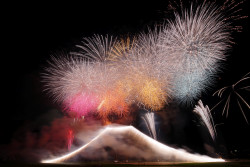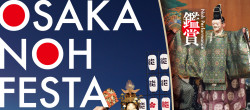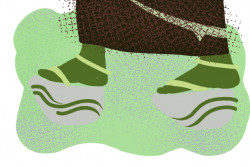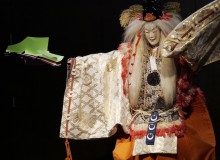
Originally published on metropolis.co.jp on July 2010
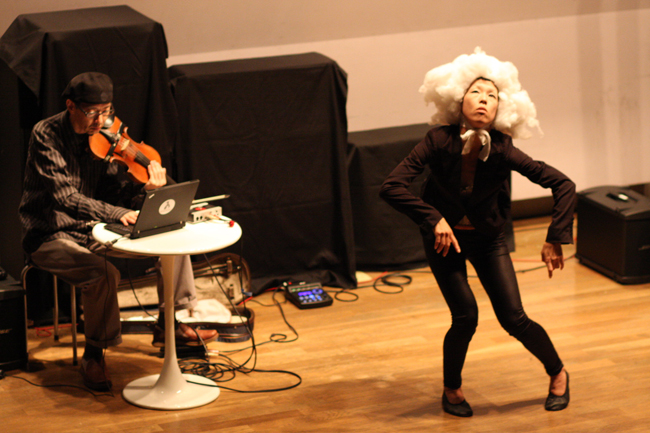
Violinist Tadahiko Yokogawa and dancer Yuko Kaseki. Photo by Dan Grunebaum
Japan has one of the world’s strongest free jazz scenes, but you wouldn’t know it by looking at the bill of the country’s leading jazz festival, Tokyo Jazz. To address this oversight, the German director of Sengawa Theater, Peter Goessner, asked vocal improviser Koichi Makigami to put together a festival devoted to free jazz and alternative improvised music. The result was Jazz Art Sengawa, which last weekend entered its third year at a sleek Tadao Ando-designed development in suburban Chofu.
I made my way through the rain to Sengawa Theater—kind of a low-key Omotesando Hills—on the last day of the three-day event to find a crew of hipsters lining up for tickets to see a performance of John Zorn’s famous game-piece, Cobra. Jazz Art traditionally ends with an all-star performance of the work, and it didn’t disappoint this time either.
Directing the piece by waving annotated placards in the air were Makigami and veteran guitarist Yoshihide Otomo, who conducted a slew of Japan’s better-known improvisers, including cellist Hiromichi Sakamoto, laptop musician Sachiko M, and vocal artists Haco and Ami Yoshida.

Koichi Makigami directs John Zorn’s Cobra. Photo by Dan Grunebaum
Despite the potential for chaos in a complicated piece that lacks a musical score, Cobra came off as a structurally coherent work, with musical tension created by the tight division of the group into sub-units and the interplay between them. The sound came in alternating waves of percussion, chords and melodies, both soft and loud. This was a crew of seasoned improvisers who knew when to step forward and when to lay back, and the crowd followed every note.
Prior to Cobra, I’d witnessed a collaboration matching Berlin-based dancer Yuko Kaseki with cellist Sakamoto and violinist Tadahiko Yokogawa. Garbed in a black suit with a long white wig, Kaseki was sometimes a ball of contorted muscles, at other times a sprite clambering about among the audience. At one point Sakomoto seemed to threaten her with one of the power tools that he regularly applies to his cello; at other points, he and Yokogawa created a soaring, treated polyphony to which Kaseki stretched her lithe body.
In between, there was time to check out the pairing of singer and shamisen player Koharu Yanagiya and percussionist and effects manipulator Akira Sotoyama. Of all the music I witnessed that day, this presented the strangest contrast. Tightly wound into a seasonal kimono, Yanagiya sung plaintive traditional Japanese minyo folk songs. Sotoyama meanwhile bashed on a motley assortment of cymbals and drums, occasionally reaching over to twist the knobs of his effects boxes, creating a sound reminiscent of a radio dial being aimlessly turned back and forth. Through this torrent of percussion and electronic static, Yanagiya somehow remained poised and dignified.

Cellist Hiromichi Sakamoto and his power tools. Photo by Dan Grunebaum
Despite being at Sengawa for five hours, I’d managed to miss much of the talent. Sax player Akira Sakata, guitarist Jim O’Rourke and butoh dancer Min Tanaka were only a few of the illustrious artists to perform at the third Jazz Art Sengawa.
According to Goessner, the entire festival is produced on a shoestring budget of only ¥4.5 million. Its continued existence depends on the generosity of Chofu city, which rents out Sengawa Theater for half the year and for the other half asks Goessner—a theater professor at nearby Toho Gakuen School of Music—to produce performing arts events.
Judging by the sold-out performances and enthusiastic response, Jazz Art Sengawa is answering a previously unmet need. Let’s hope Chofu continues to see it that way too.

